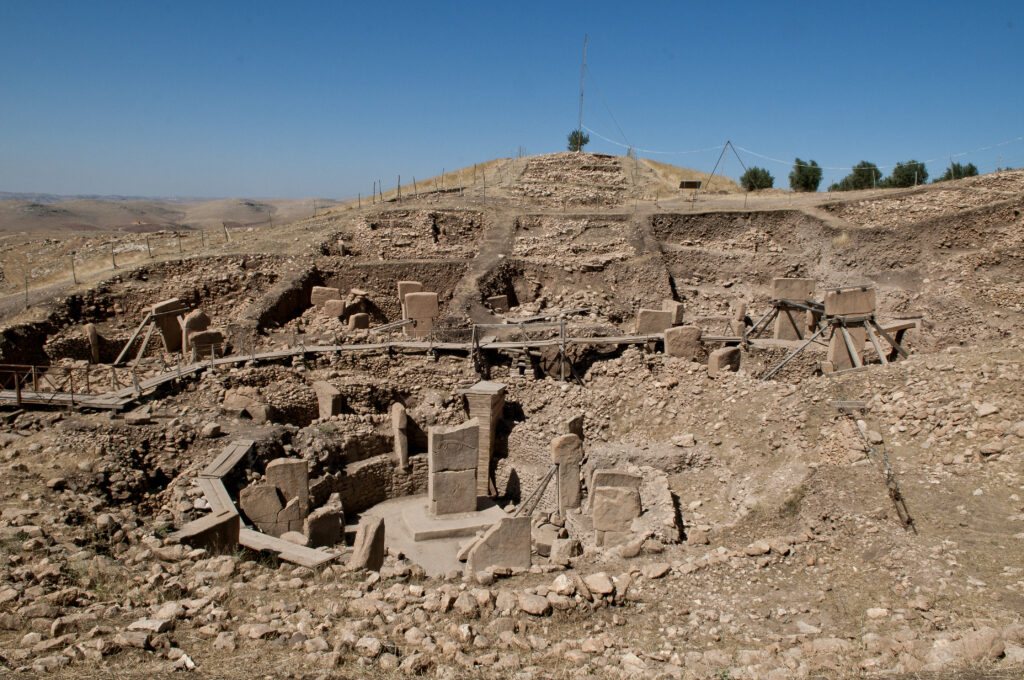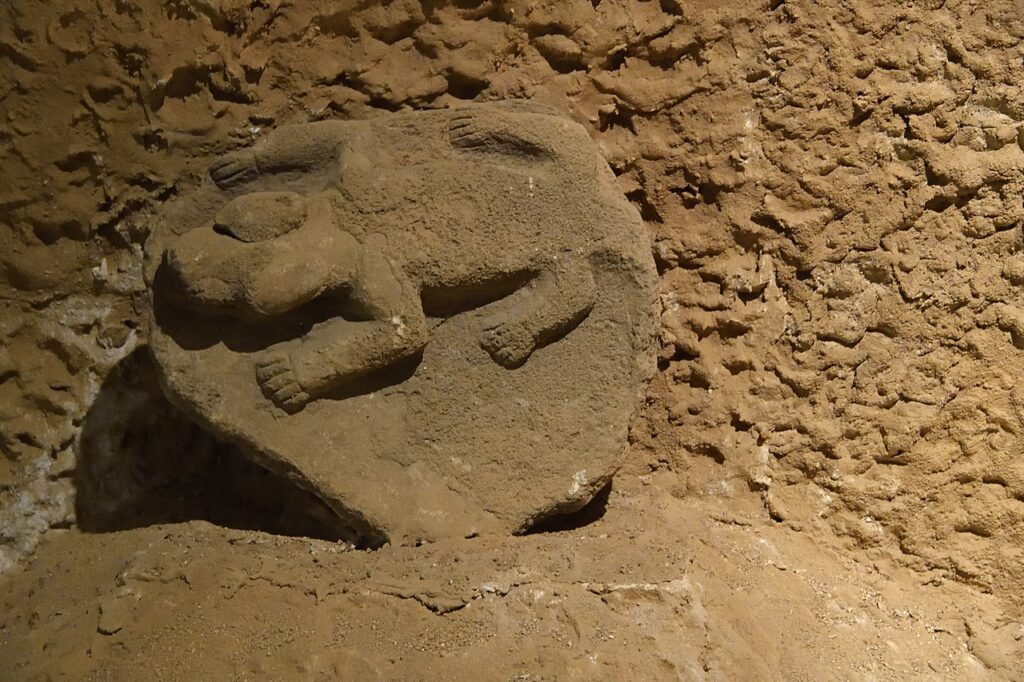
Göbekli Tepe
Nestled in the rolling hills of southeastern Turkey lies a place that has reshaped our understanding of history—Göbekli Tepe. Often referred to as the world’s first temple, this ancient site is not just a marvel of engineering but also a testament to humanity’s early spiritual aspirations. Dating back over 11,000 years, Göbekli Tepe predates iconic structures like the Great Pyramids and Stonehenge by millennia. Its discovery has challenged long-standing theories about civilization and continues to intrigue historians, archaeologists, and travelers alike.
This article takes you on a journey to uncover the secrets, significance, and legacy of Göbekli Tepe, one of the most profound archaeological discoveries of our time.
A Glimpse Into the Past
Discovered in 1963 and brought to global attention in the 1990s, Göbekli Tepe is located near the ancient city of Şanlıurfa in Turkey. Its name, meaning “Potbelly Hill” in Turkish, reflects its modest appearance, yet what lies beneath is anything but ordinary.
What makes Göbekli Tepe extraordinary is its age. Radiocarbon dating places its construction around 9600 BCE, during a time when humanity was transitioning from a nomadic hunter-gatherer lifestyle to settled agricultural communities. This ancient site, built by people without metal tools, the wheel, or domesticated animals, stands as a monumental achievement in engineering and spiritual expression.
The Awe-Inspiring Features of Göbekli Tepe
Göbekli Tepe’s layout and construction reveal a level of complexity that was unheard of for its time. Let’s explore the most striking features of this ancient wonder:
1. Massive T-Shaped Pillars
The site is dominated by towering limestone pillars, some reaching up to 20 feet in height and weighing as much as 20 tons. These pillars are intricately carved with depictions of animals, including lions, snakes, foxes, and vultures. The carvings may have been symbolic, representing myths, spiritual beliefs, or even totemic guides.
2. Circular Enclosures
The pillars are arranged in circular formations, with two central monoliths surrounded by smaller ones. These enclosures are thought to have served as ritual spaces, perhaps for religious ceremonies, community gatherings, or spiritual rites. The intentional layout suggests early forms of organized worship and social structure.
3. Sophisticated Construction Techniques
Despite their lack of advanced tools or technologies, the builders of Göbekli Tepe demonstrated incredible ingenuity. The alignment of the site with celestial patterns indicates a keen understanding of astronomy, hinting at its use as an early observatory or a place for seasonal rituals.
The Spiritual Heart of an Ancient World
Göbekli Tepe’s purpose remains one of its greatest mysteries. Unlike other archaeological sites, there is no evidence of domestic life—no houses, cooking tools, or agricultural implements. This absence suggests that Göbekli Tepe was not a settlement but a dedicated ceremonial center.
Some researchers believe that the site served as a bridge between the physical and spiritual realms. Its carvings and layout may represent myths, cosmic events, or shamanistic practices. The emphasis on animals suggests a deep connection to the natural world, possibly reflecting the beliefs and rituals of the hunter-gatherer communities who built it.
How Göbekli Tepe Transformed History
The discovery of Göbekli Tepe has had profound implications for our understanding of human history. Here are three ways it has rewritten the narrative:
1. Religion Before Agriculture
Before Göbekli Tepe’s discovery, it was widely believed that organized religion emerged only after the advent of agriculture and permanent settlements. However, this site suggests the opposite: that shared spiritual practices might have been the glue that united communities, inspiring them to settle and cultivate food to support large gatherings.
2. A New Timeline for Civilization
Göbekli Tepe pushes back the timeline for complex societies. Its construction required significant collaboration, planning, and resource allocation, indicating that early humans were capable of far more sophisticated social organization than previously thought.
3. Celestial Connections
Some researchers propose that Göbekli Tepe’s design aligns with stars, particularly the constellation Orion. This connection highlights humanity’s early fascination with the cosmos and its influence on spiritual and ritualistic practices.
Mysteries Yet to Be Solved
While Göbekli Tepe has answered many questions about humanity’s past, it has also raised new ones:
- Who Built It?
The site was constructed by hunter-gatherer groups with no access to advanced tools. How they managed to quarry, transport, and erect such massive stones remains a mystery. - Why Was It Buried?
Around 8,000 BCE, Göbekli Tepe was deliberately buried, preserving it for millennia. Some theories suggest this was done to protect the site or mark the end of its spiritual significance. - What Do the Carvings Mean?
The animal motifs and abstract symbols on the pillars are rich with meaning, but their exact significance remains unknown. They could represent mythological stories, spiritual guides, or early forms of communication.
Visiting Göbekli Tepe
Today, Göbekli is a UNESCO World Heritage Site and a popular destination for history enthusiasts, archaeologists, and spiritual seekers. The site features protective canopies to preserve its delicate structures, and an on-site museum offers artifacts and insights into its history.
Visitors can walk among the ancient pillars and experience the awe of standing in a place that reshaped humanity’s understanding of its origins. The surrounding region, rich in history and culture, makes for an unforgettable journey into the past.
Fascinating Facts About Göbekli Tepe
- Older Than the Pyramids
Göbekli Tepe is more than 6,000 years older than the Great Pyramid of Giza. - No Agricultural Tools Found
Despite its monumental scale, no evidence of farming has been discovered at the site, emphasizing its ceremonial nature. - Collaborative Effort
The construction of Göbekli Tepe required the combined effort of thousands, showcasing humanity’s capacity for cooperation long before modern societies emerged. - “Zero Point of History”
Göbekli Tepe has been called the “Zero Point of History” for redefining the timeline of human civilization.
A Legacy Carved in Stone
Göbekli Tepe is not just an archaeological site; it is a window into humanity’s early quest for meaning, connection, and creativity. Its discovery underscores the importance of spirituality and community in shaping the course of human history.
As we continue to uncover its secrets, Göbekli Tepe serves as a powerful reminder of our shared heritage and the timeless desire to understand our place in the universe.
Conclusion

Göbekli Tepe is more than the world’s first temple—it is a story of human ingenuity, collaboration, and faith carved in stone. Its monumental architecture, intricate carvings, and enduring mysteries make it a beacon of inspiration for all who seek to understand our shared past.
Whether you are a history enthusiast, a spiritual seeker, or simply curious about the origins of civilization, Göbekli Tepe invites you to explore, reflect, and marvel at the achievements of our ancient ancestors.
Let this ancient wonder inspire you to delve deeper into the mysteries of the past and celebrate the enduring spirit of humanity.